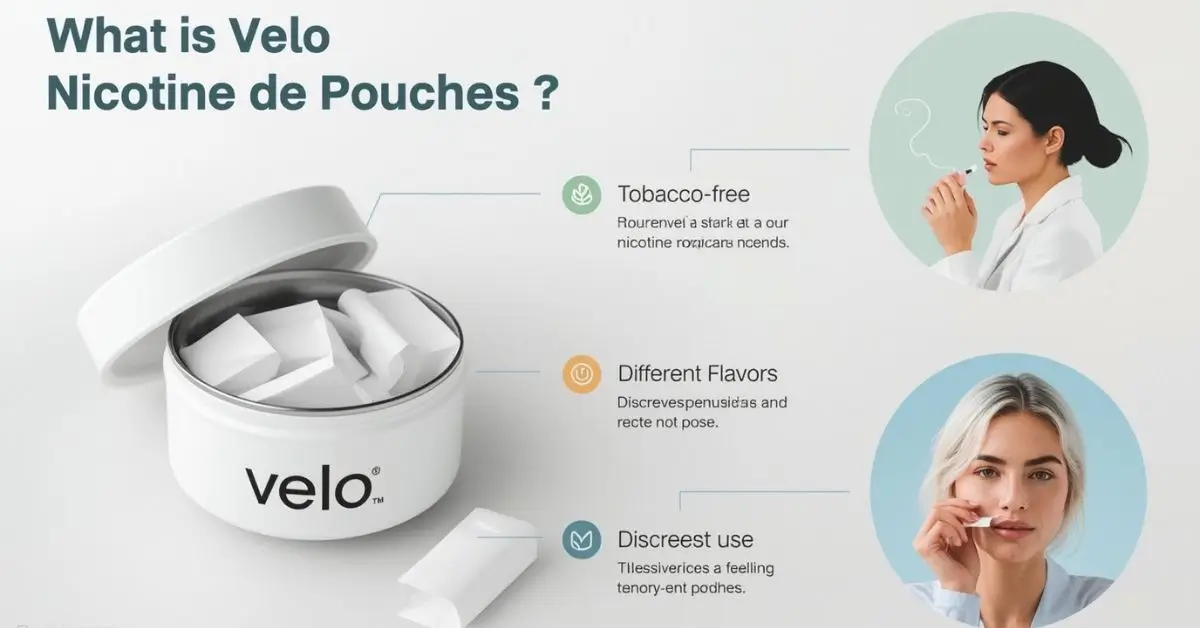HEALTH
Decoding Healthcare: Real-World Medical Coding Examples

Decoding Healthcare administration, medical coding examples play a pivotal role in ensuring accurate billing and maintaining compliance. When a patient visits a clinic or hospital, coders translate diagnoses, treatment plans, and procedures into standardized codes—such as ICD‑10, CPT, and HCPCS. These codes not only facilitate insurance claims but also support analytics, quality metrics, and patient care coordination.
The Building Blocks: ICD‑10, CPT, and HCPCS
Every medical coding journey begins with foundational code sets. The International Classification of Diseases, Tenth Revision (ICD‑10) captures diagnoses, from acute bronchitis to chronic kidney disease. On the procedural side, Current Procedural Terminology (CPT) describes services like colonoscopies or joint injections. Finally, HCPCS Level II maintains supplemental codes for ambulance services, durable medical equipment, and injectable medications. Real-world coding examples often involve using these systems together, as when an ICD‑10 code indicates a fracture diagnosed, and a CPT code describes the corresponding cast application performed.
Coding Chronic Disease Visits
Consider a patient with type 2 diabetes who visits for routine management and lab testing. The medical coder assigns E11.65, which identifies type 2 diabetes with hyperglycemia. Next, CPT code 83036 represents a blood glucose test taken by the lab. To round out documentation, a HCPCS code like J3301 might reflect an injectable medication if used. These integrated codes support the insurer’s understanding of both the condition and care delivered.
Example: Acute Respiratory Infection in Pediatrics
A child presenting with fever and cough is diagnosed with acute bronchitis. The coder selects ICD‑10 J20.9 to reflect bronchitis, unspecified. The clinician orders a chest X‑ray, which uses CPT 71045. If the visit includes a nebulizer treatment, CPT code 94640 is added. Each code documents discrete services—diagnosis, imaging, treatment—ensuring transparent communication between provider and payer.
Surgical Intervention: Knee Replacement Coding
Joint replacement procedures showcase how precise coding supports reimbursement. A patient undergoing a total knee arthroplasty receives CPT 27447 for the surgery. ICD‑10 codes like M17.11 denote unilateral primary osteoarthritis tied to the procedure. Post‑op physical therapy adds HCPCS codes such as G0151 for therapy services furnished in a patient’s home. This trio of codes underlies both surgical billing and quality-of-care analytics.
Emergency Department and Trauma Cases
In emergency and trauma settings, coders must navigate layers of complexity. A motor vehicle accident that resulted in lacerations and a splintered wrist might require ICD‑10 codes S51.311A (laceration with foreign body) and S62.314A (fracture). CPT codes 25600 for wrist fractures and 12002 for laceration repair are added. Additionally, advanced imaging—CT scans or MRIs—employ codes like 70486 or 73221. The complete claim reflects the comprehensive care delivered, from diagnosis to surgical repair.
Inpatient Care: Bundled Payments and DRGs
Hospitals often use Diagnosis-Related Group (DRG) systems based on ICD‑10 and CPT interplay. For example, a childbirth case with complications may involve multiple diagnosis codes—like O80 for single spontaneous delivery combined with O99.82 for diabetes complicating pregnancy—and procedure codes for delivery type, such as 59400 for routine vaginal delivery. The bundled DRG reflects overall resource consumption, guiding reimbursement and operational insights.
Specialty Practice: Oncology Coding
Oncology coding exemplifies nuance and precision. A breast cancer patient undergoing lumpectomy and adjuvant radiation therapy may require multiple diagnosis codes—like C50.911 for malignant neoplasm of unspecified site—alongside CPT codes 19301 for the surgical excision and 77418 for intensity-modulated radiation therapy (IMRT). If chemotherapy infusions are administered, HCPCS codes like J9355 (trastuzumab injection) must be included. This blend of diagnosis, procedure, and drug codes ensures the clinic is reimbursed correctly while contributing to national cancer registries and personalized care plans.
The Role of Documentation and Compliance
Accurate medical coding begins with clear, comprehensive documentation. Clinicians must detail symptoms, diagnostic tests, services, and treatments. Coders translate these notes into code sets, but compliance demands more: linking each code to a specific statement in the medical record
Technology Integration
Modern electronic health record (EHR) systems incorporate computer-assisted coding (CAC) tools. These systems scan physician notes for keywords and medical terminology—like “palliative care” or “acute renal failure”—then suggest codes such as Z51.5 or N17.9. NLP-enhanced modules propose accurate CPT and HCPCS pairings based on narrative text. While human coders confirm selections, these tools dramatically reduce errors and speed claim submission.
Real-Time Example: Telehealth Visits
Telehealth platforms have reshaped outpatient care, but they also require tailored coding. A remote consult for hypertension might use ICD‑10 I10 to identify the diagnosis. The telehealth encounter itself could use CPT codes 99441–99443 (telephone E/M services) or 99421–99423 (online digital E/M services). If the patient obtains a lab order, CPT codes like 80061 for lipid panels must follow. Appropriate place of service (POS) indicators ensure compliance with payer telehealth policies.
Tips for Coders: Best Practices and Avoiding Common Pitfalls
To master medical coding examples, coders should hone key strategies. First, always cross-reference diagnosis with procedure — ensuring every claim is logical and defensible. Second, stay current with annual updates in ICD‑10‑CM, CPT, and HCPCS—these revisions impact a wide range of specialties. Third, invest in continuing education certificates from recognized bodies like AAPC or AHIMA. Finally, document diligently: if a practitioner performed a “bilateral” procedure, add modifier 50 to the CPT code and ensure supporting language.
FAQs
Q: What are the main medical code sets used today?
A: The primary code sets include ICD‑10‑CM for diagnoses, CPT for procedures and services, and HCPCS Level II for supplies, drugs, and specialized items.
Q: How do medical coders ensure claims are accurate?
A: Through thorough documentation, clinical-to-code matching, use of NLP-assisted EHR tools, and ongoing coding audits.
Q: Can telehealth visits be coded like in-person visits?
A: Yes, telehealth visits use designated CPT codes (such as 99441–99443) and require appropriate place-of-service indicators for proper reimbursement.
Q: What is upcoding and how is it avoided?
A: Upcoding occurs when more expensive codes are used than justified. It’s avoided by aligning codes precisely with documentation and physician notes.
Q: Why might a claim get rejected?
A: Common reasons include mismatched diagnosis and procedure codes, missing modifiers, lack of documentation support, and outdated code usage.
Conclusion
From chronic disease management to telehealth visits and surgical procedures, real-world medical coding examples illuminate how precision and compliance intersect in healthcare. Coders rely on ICD‑10, CPT, and HCPCS frameworks—supported by documentation, audits, and technology—to translate care into coded narratives that drive billing, analytics, and quality oversight

HEALTH
What Is Velo and Is It Safer Than Smoking?

If you’ve heard people asking “what is Velo?” you’re not alone. As smoking rates decline and alternatives like vaping and nicotine pouches gain popularity, many adults are exploring products such as nicotine pouches. Marketed as tobacco-free, smokeless, and discreet, Velo appeals to smokers, vapers, and health-conscious adults who want an alternative to traditional cigarettes or smokeless tobacco like snus.
But is it really safer? How does it work? And is Velo right for you? In this article, we’ll break down the facts with clarity, citing expert sources, and comparing Velo with other nicotine pouch brands so you can make an informed choice.
What Is Velo Nicotine?
Velo is a brand of oral nicotine pouches that deliver nicotine without smoke, combustion, or tobacco leaf. Unlike cigarettes or traditional snus, Velo is tobacco-free—it contains nicotine, flavorings, pH adjusters, and plant-based fillers that create a small white pouch.
You place a pouch under your upper lip, where it slowly releases nicotine. Each pouch typically lasts between 20 to 40 minutes, depending on personal preference.
No smoke
No spit
No ash
Discreet and portable
How Does Velo Work?
Velo pouches work through oral absorption. When you place the pouch under your lip:
- The pouch contacts your gum and saliva.
- Nicotine is absorbed into your bloodstream through oral mucosa.
- You feel the effects within minutes, lasting up to half an hour.
This process is similar to snus, but Velo is marketed as a modern, tobacco-free snus alternative.
Key Features of Velo
| Feature | Details |
|---|---|
| Nicotine Strengths | Ranges from 2 mg to 7 mg per pouch (varies by market) |
| Flavors | Mint, citrus, berry, coffee, and more |
| Format | Small white pouches, slim and discreet |
| Tobacco-Free | Uses nicotine salts but no tobacco leaf |
| Duration | 20–40 minutes per pouch |
Velo Flavors and Strengths
Its offers a wide variety of flavors to suit different preferences:
- Velo Mint pouches – fresh and cooling
- Berry blends – sweet and fruity
- Citrus or tropical – zesty and refreshing
- Coffee-inspired – bold for caffeine lovers
Velo Strengths (mg)
- Light (2–4 mg) for beginners
- Medium (4–6 mg) for regular users
- Strong (7 mg+) for experienced pouch users
The Velo vs Zyn: What’s the Difference?
One of the most common questions is the difference between Velo and Zyn, two leading nicotine pouch brands.
| Feature | Velo | Zyn |
|---|---|---|
| Tobacco-Free | Yes | Yes |
| Flavors | Wide variety | More limited |
| Strengths | 2–7 mg | 3 & 6 mg |
| Texture | Slightly softer pouches | Firmer texture |
Is Velo Safer Than Smoking?
While no nicotine product is completely risk-free, Velo eliminates smoke, tar, and combustion byproducts found in cigarettes.
According to Public Health England and other health authorities, nicotine itself is addictive but not the primary cause of smoking-related diseases. By removing tobacco and combustion, products like Velo may present reduced harm compared to smoking.
However, long-term studies are still ongoing, and health experts caution that nicotine addiction and potential side effects remain concerns.
Pros and Cons of Velo Nicotine Pouches
Advantages
- Tobacco-free and smokeless
- No ash, no smoke, discreet use
- Wide flavor and strength variety
- Convenient for travel and social settings
Disadvantages
- Still addictive (nicotine)
- Possible gum irritation or dry mouth
- Not risk-free—long-term health data is limited
- May be restricted in some countries
Expert References
- Centers for Disease Control and Prevention (CDC) – Nicotine and tobacco alternatives
- Public Health England – Report on harm reduction and nicotine delivery alternatives
- National Library of Medicine (NIH) – Studies on smokeless nicotine products and health outcomes
FAQ’s
What is Velo nicotine?
Velo is a brand of tobacco-free nicotine pouches designed to deliver nicotine without smoke or combustion.
Is Velo safer than smoking?
Yes, Velo removes smoke, tar, and tobacco leaf. However, it still contains nicotine, which is addictive.
Does Velo have tobacco?
No. Velo is tobacco-free, using plant fibers and nicotine salts.
How long do Velo pouches last?
Typically 20–40 minutes, depending on use.
What are the side effects of Velo nicotine?
Potential side effects include gum irritation, dry mouth, hiccups, and nicotine addiction.
Where to buy Velo nicotine pouches?
They are available online, in convenience stores, and in tobacco shops across the U.S. and Europe.
What flavors does Velo come in?
Mint, berry, citrus, coffee, and seasonal limited editions.
Conclusion
So, what is Velo? In short, it’s a tobacco-free nicotine pouch brand offering a modern alternative to smoking and snus. With a variety of flavors, strengths, and discreet formats, it appeals to smokers, vapers, and health-conscious adults who want a less harmful option.
While it may reduce harm compared to cigarettes, it is not risk-free. As with all nicotine products, use with awareness and moderation is essential.
BLOG
What Are Varifocal Glasses? Benefits and Drawbacks

If you’re over 40 and noticing it’s harder to read up close while still needing clear vision for distance, you’re not alone. Presbyopia—a natural age-related vision change—affects millions worldwide. For people already wearing single-vision glasses, this can feel frustrating. The solution many turn to is varifocal glasses. But what are varifocal glasses, and how do they work?
This article breaks it down in simple terms for adults, professionals, budget-conscious shoppers, and even students of optometry. You’ll discover their benefits, costs, comparisons with other lenses, and expert insights to help you decide if varifocals are right for you.
What Are Varifocal Glasses?
Varifocal glasses, sometimes called multifocal glasses or progressive lenses, are specially designed to provide clear vision at multiple distances—near, intermediate, and far—without needing separate pairs of glasses.
Unlike bifocals, which have a visible line dividing near and distance vision, varifocals have a smooth, seamless transition across the lens.
Key Features of Varifocal Lenses Explained
- Top of lens: Distance vision (driving, watching TV)
- Middle of lens: Intermediate vision (computer, dashboard)
- Bottom of lens: Near vision (reading, phone use)
This design allows wearers to see clearly in all situations, reducing the inconvenience of switching glasses.

How Do Varifocal Glasses Work?
The lens is divided into different focal zones that blend into each other. As your eyes move up or down, the prescription strength gradually shifts.
For example:
- Looking up: your distance prescription kicks in
- Looking straight ahead: you get intermediate focus
- Looking down: you see your near prescription
This gradual adjustment is why varifocals are often called progressive lenses.
Source: American Academy of Ophthalmology
Varifocals vs Bifocals: What’s the Difference?
| Feature | Varifocals (Progressives) | Bifocals |
|---|---|---|
| Lens design | Seamless, no visible line | Divided by a visible line |
| Vision zones | Near, intermediate, and distance | Only near and distance |
| Aesthetics | Modern, discreet | Older style, noticeable line |
| Adaptation | May take time to adjust | Easier but less versatile |
| Suitability | Everyday use, all distances | Limited to near & far only |
Many adults prefer varifocals for their natural look and versatility, but some budget-conscious shoppers may still consider bifocals for lower cost.
Source: NHS UK – Types of Glasses Lenses
Who Should Wear Varifocal Glasses?
Varifocals are most helpful for:
- Adults over 40 with presbyopia
- Professionals who use screens but also need distance clarity
- Frequent drivers who need dashboard + road visibility
- People tired of swapping between reading and distance glasses
However, they may not be ideal for everyone. Some people find the peripheral “distortion zones” difficult to adjust to at first.
Pros and Cons of Varifocal Glasses
Advantages
- One pair of glasses for all distances
- No distracting lines on lenses
- Modern, stylish appearance
- Great for daily activities (reading, driving, screens)
Disadvantages of Varifocal Glasses
- Adjustment period: may take a few days or weeks to adapt
- Peripheral distortion in some lens types
- Higher cost compared to single-vision or bifocals
Source: All About Vision
How Much Do Varifocal Glasses Cost in the UK?
Varifocal glasses cost varies depending on brand, coating, and lens quality.
- Basic varifocals: £50 – £120
- Mid-range lenses: £150 – £250
- Premium lenses: £300 – £600+
NHS patients may get a contribution towards varifocal glasses with a valid prescription, but full coverage is rare.
Best Varifocal Lenses for Everyday Use
When choosing varifocal lenses, consider:
- Freeform technology for sharper vision
- Anti-reflective coating for computer work and night driving
- Blue-light filter for digital screen users
- Lightweight material for comfort
Some of the best varifocal lens brands include Essilor Varilux, Zeiss Precision, and Hoya lenses.
Are Varifocals Good for Driving and Computer Work?
Yes—but with some conditions.
- Driving: Varifocals are excellent for switching between road, dashboard, and mirrors.
- Computer work: Standard varifocals can cause neck strain if you tilt your head often. Occupational or “office varifocals” are designed to improve screen ergonomics.
Getting Used to Varifocal Glasses
It’s normal for new wearers to feel disoriented at first. Adaptation tips include:
- Wear them full-time, not just occasionally
- Point your nose toward what you want to see
- Give yourself 1–2 weeks to adjust
Conclusion
Now that you know what are varifocal glasses, you can see why they’re a popular solution for presbyopia and everyday vision needs. They offer seamless vision correction, style, and convenience—though they may require a short adjustment period and a higher budget.
Whether you’re a professional, a driver, or simply tired of juggling multiple pairs of glasses, varifocals could be the upgrade that transforms your daily life.
FAQ’s
What are varifocal glasses and how do they work?
Varifocal glasses use progressive lenses that blend multiple prescriptions into one lens, allowing clear vision at all distances.
Are varifocal glasses the same as progressive lenses?
Yes, the terms are used interchangeably. Both describe seamless multifocal lenses.
What is the difference between varifocal and bifocal glasses?
Bifocals have a visible line with two focal zones, while varifocals offer a smooth transition across three.
Do varifocal glasses take time to get used to?
Yes, most people adapt within 1–2 weeks, though some may need longer.
How much do varifocal glasses cost in the UK?
Basic lenses start around £50, while premium options can cost over £600.
Can I get varifocal glasses on the NHS?
You may get a voucher discount if eligible, but most people pay privately for varifocals.
HEALTH
Life’s Swings: Finding Balance in the Ups and Downs

Life is a journey full of highs and lows emotional swings that often feel unpredictable and overwhelming. Whether you’re riding the high of a personal achievement, feeling the loss of a loved one, or navigating a career setback, the ebb and flow of life’s challenges can sometimes leave you feeling off balance. However, it’s in these very emotional swings that opportunities for growth and resilience lie. Life’s swings, though challenging, provide valuable lessons in emotional intelligence, resilience, and self-care, which can help you build a sense of stability amidst the chaos.
In this article, we’ll explore how to navigate life’s ups and downs, finding balance while enhancing your emotional well-being. By embracing change, managing emotional responses, and fostering mental resilience, you can better cope with life’s natural swings and find equilibrium in the midst of emotional turbulence.
Understanding Life’s Swings: The Emotional Rollercoaster
Life is inherently unpredictable, and its swings reflect this. We all experience periods where we feel on top of the world, full of energy, confidence, and joy, followed by times of doubt, disappointment, or sadness. These emotional fluctuations are not only a normal part of life, but they also shape our personal growth and emotional intelligence.
At the core of life’s swings is the human tendency to respond to external events—successes, failures, changes, or challenges—with strong emotional reactions. For example, receiving praise for a job well done or making progress on personal goals might trigger feelings of joy and pride. Conversely, unexpected setbacks, such as losing a job or facing a relationship breakdown, can stir emotions like anger, fear, or sadness.
Recognizing that emotional highs and lows are part of a larger life journey can help us develop a more balanced perspective. Instead of resisting these fluctuations or viewing them as obstacles, we can learn to embrace them as natural events that contribute to our overall well-being.
The Role of Emotional Resilience in Navigating Life’s Swings
Emotional resilience is key to finding balance in the face of life’s emotional swings. Resilience refers to the ability to adapt and recover from stress, adversity, and trauma. People with high emotional resilience don’t simply endure life’s ups and downs—they grow from them. They develop an understanding that setbacks don’t define them, and they cultivate a mindset that enables them to bounce back stronger after each challenge.
Resilience doesn’t come naturally to everyone, but it can be developed through intentional effort. Building resilience involves strengthening your mental well-being and adopting coping mechanisms that allow you to stay grounded during turbulent times. These strategies can include:
-
Self-awareness: Understanding your emotions and how they influence your thoughts and behaviors is the first step to developing emotional resilience. Emotional intelligence allows you to recognize your emotional triggers and respond to them thoughtfully, rather than reacting impulsively.
-
Optimism and positive thinking: Cultivating a positive outlook on life can dramatically improve how you respond to challenges. People who view life’s difficulties as temporary and solvable are more likely to recover quickly from adversity.
-
Problem-solving skills: When faced with a setback, it’s important to focus on solutions rather than fixating on the problem. By approaching challenges with a practical mindset, you can move forward more confidently.
-
Social support: Having a support network of friends, family, or a mentor can provide the emotional backing you need when navigating difficult times. Social connections offer a safe space to share your feelings, receive advice, and gain perspective.
Mindfulness and Self-Care: Essential Tools for Managing Life’s Emotional Swings
In addition to resilience, practicing mindfulness and engaging in consistent self-care are invaluable strategies for maintaining balance during life’s emotional swings. Mindfulness refers to the practice of staying present in the moment without judgment. It helps you detach from overwhelming emotions and gain clarity during times of uncertainty.
When you’re experiencing emotional highs or lows, it’s easy to get swept up in the intensity of your feelings. Mindfulness provides a way to center yourself, allowing you to acknowledge and process your emotions without becoming consumed by them. Mindful practices like meditation, deep breathing, or even mindful walking can reduce stress and bring clarity during times of emotional turbulence.
Self-care, on the other hand, involves engaging in activities that nurture your physical, emotional, and mental health. Whether it’s taking time to relax, exercising, eating healthy foods, or pursuing a hobby, self-care practices give you the strength to handle life’s swings with greater ease. Taking care of yourself creates a foundation of well-being that allows you to approach challenges with a more balanced mindset.
Together, mindfulness and self-care enable you to respond to life’s emotional fluctuations in a healthier way, allowing you to remain grounded even in difficult situations.
Embracing Change: How to Turn Life’s Swings into Opportunities for Growth
Change is one of life’s constants, and while it can trigger emotional swings, it also presents opportunities for personal growth and development. The ability to embrace change is essential for navigating life’s ups and downs with grace.
When life shifts unexpectedly—whether due to personal or external factors—it often forces us to adapt. This can lead to feelings of uncertainty or fear, but it also offers the potential for new beginnings. Growth mindset encourages us to view change as an opportunity to learn, rather than something to fear.
A key component of embracing change is accepting that life will not always go as planned. Plans will be disrupted, goals may shift, and unexpected events will occur. Rather than resisting these changes, allow yourself to accept them as part of the journey. By doing so, you’ll be better equipped to handle whatever comes your way, turning each challenge into an opportunity for self-improvement.
Additionally, learning to adapt to change helps build emotional intelligence and personal resilience. For example, a career change might feel unsettling at first, but over time, you may discover new passions, skills, or strengths that you didn’t know you had. Embracing this transformation allows you to thrive rather than merely survive through life’s swings.
Practical Tips for Finding Balance Amid Life’s Swings
While managing life’s emotional fluctuations can feel overwhelming, there are simple practices that can help you find balance. These tips can help you develop resilience and stay grounded during difficult times:
-
Set realistic expectations: Life is full of surprises, and not everything will go as planned. By setting realistic expectations and being flexible, you can prevent frustration when things don’t go as anticipated.
-
Limit negative self-talk: When life feels unpredictable, it’s easy to fall into negative thinking patterns. Remind yourself that emotional swings are temporary and don’t define your overall journey.
-
Create a routine: Establishing a routine can provide stability during times of change. Whether it’s a morning ritual, regular exercise, or dedicated time for relaxation, having consistent practices helps anchor your day.
-
Practice gratitude: Focusing on the positives in life, even during tough times, can shift your perspective. Gratitude helps you appreciate the good moments, even if they feel fleeting.
FAQs
Q: How can I balance my emotions during life’s tough times?
A: Balancing emotions requires building emotional resilience, practicing mindfulness, and taking care of your mental health. Engaging in self-care activities and maintaining a positive outlook can also help you stay grounded during tough times.
Q: How do emotional swings affect mental health?
A: Emotional swings can create stress and anxiety, but if managed well, they can also provide opportunities for personal growth. Developing resilience, mindfulness, and coping strategies can help mitigate the negative impact on mental health.
Q: What are some tips for staying calm during life’s ups and downs?
A: Focus on building a strong emotional foundation through mindfulness, self-care, and positive thinking. Creating a support system, setting realistic expectations, and practicing gratitude can also help maintain calmness during emotional swings.
Q: Can embracing change lead to growth?
A: Yes! Embracing change allows you to adapt and grow, building resilience and emotional intelligence. Each life swing offers an opportunity to learn something new about yourself and the world around you.
Conclusion
Life’s swings its emotional ups and downs are a natural part of the human experience By cultivating emotional resilience practicing mindfulness and embracing change we can better navigate these fluctuations and maintain balance. Life is full of surprises and while not every swing will be easy to handle, learning to approach them with grace patience and understanding can help us grow stronger with each challenge. Remember it’s not about avoiding the swings but learning how to dance with them, finding stability and growth amidst the chaos.
-

 BUSINESS2 months ago
BUSINESS2 months agomPaaS: Powerful Precision for Modern Measurement
-

 BLOG4 months ago
BLOG4 months agoToyota Sequoia Towing Power: What Can It Really Haul?
-

 BLOG4 months ago
BLOG4 months agoGolden Cream of Spain: A Heritage Rich in Taste and Tradition
-

 BLOG3 months ago
BLOG3 months agoFinding Home in China: A Journey Through Culture and Comfort
-

 BLOG3 months ago
BLOG3 months agoYE Tracker: Your Ultimate YouTube Earnings Companion
-

 EDUCATION3 months ago
EDUCATION3 months agoStolen Mail, Lost Checks, Hijacked Credit
-

 BLOG3 months ago
BLOG3 months agoDJ On Board: Spinning Beats at Every Turn
-

 FASHION4 months ago
FASHION4 months agoParfum vs Cologne: What’s the Real Difference?


